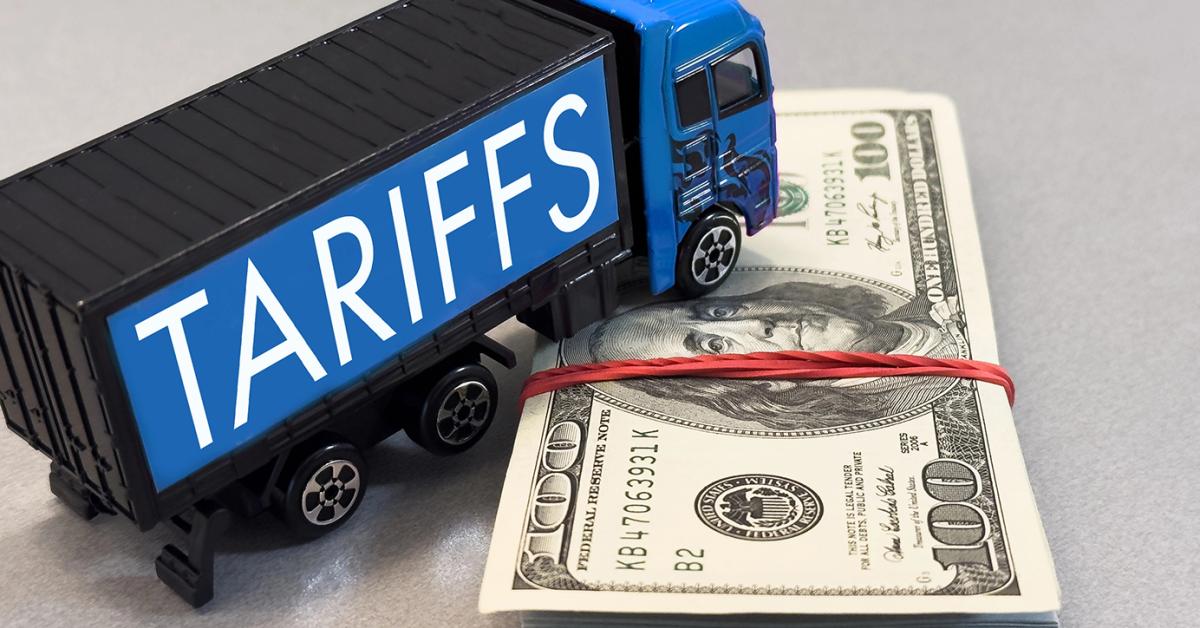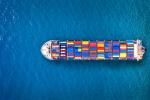CHICAGO — After several days of U.S. tariff increases and pauses earlier in April, the situation has calmed somewhat and businesses are working with a 10% increase on goods imported from foreign countries.
There are exceptions to this on some products and countries. Imports from China are taking the full force of increases with the possibility of a cumulative 145% from specific product and reciprocal tariffs.
The textile care industry’s response to the tariff increases has generally been to wait and see.
A few suppliers have enacted temporary surcharges to offset price increases. Since the supply-chain issues related to COVID, many dry cleaners have increased stock of necessary goods and supplies to last for several months and are monitoring the situation to come up with appropriate strategies to keep goods and equipment on hand at the best prices.
The upheaval in U.S. tariffs on imports has been front and center since day one of the new administration.
TRUMP’S AMERICA FIRST TRADE POLICY
On Jan. 20, President Donald Trump issued an executive order on an America First Trade Policy. The order called for many different studies (then due by April 1) on national security and trade policy issues, and a review of the United States-Mexico-Canada Agreement (USMCA).
During an April 2 address, President Trump declared the day to be “Liberation Day,” unveiling a two-tier tariff structure. This involved a 10% tariff on imports from all countries (except Canada and Mexico) and “reciprocal” tariffs on specific countries engaged in what the administration termed “unfair trade practices.”
The 10% tariff went into effect on April 5, followed by the reciprocal tariffs on April 9.
Since April 2, there has been a flurry of activity on the trade front to decipher and counter these new tariffs. Later in the day on April 9, after many countries sought to make deals, reciprocal tariffs were paused for 90 days, leaving the 10% tariff in place.
The result? A lot of confusion and concern about the cost of imported goods and the effect it will have on future business.
So, what’s going on with U.S. tariffs now, and what might happen later this year?
This article, presenting broad strokes about U.S. tariff policy since 2025 began, comes from two webinar updates.
The National Association of Wholesaler-Distributors (NAW) presented its government update, “Navigating Tariffs: Strategic Insights for Wholesaler-Distributors,” on April 8.
The main presenters were Alex Hendrie, NAW’s vice president of government affairs, and Eddy Hayes, a principal partner at Leake Andersson in New Orleans. He leads the firm’s international trade and customs practice.
Then on April 16, the National Federation of Independent Business (NFIB) presented “Tariffs 101 and the Latest Updates,” led by Holly Wade, executive director of the NFIB Research Center.
(Note: This article is for informational purposes only. For advice about tariffs regarding your specific business, contact your attorney or financial adviser of choice.)
PURPOSE OF NEW TARIFF POLICY
“There are a lot of conflicting messages and confusion from Trump and his advisers about what the goal of ‘Liberation Day’ was,” says Hendrie. “Was it to impose tariffs on foreign countries who are taking advantage of us? Or is it doing that to then get better trade, trade deals and trade conditions?
“A lot of the administration officials have noted anywhere from 50 to 70 countries have already approached the U.S. over a deal for lower tariffs. So, as much as there might be hesitancy about Trump’s approach, I think they would make the case that this is working.”
Hayes says that, when looking at the U.S. tariff structure, the foundation of the trade system for the past 80 years is a bedrock principle known as the most favored nation (MFN) rate. That’s been in place since the general agreement on tariffs and trade in 1947. The MFN rate is the highest tariff that a country can charge for a particular good.
“For example, if I’m a U.S. business and I’m importing bicycles from Belgium, if the government agrees to an MFN rate of 10% for those imported bicycles, then that’s the rate I have to charge to bicycles from Panama, from China, from every country that’s in the WTO (World Trade Organization) system,” he says.
“The goal of an MFN rate is to provide security and predictability and non-discrimination in trade. So, whatever the best deal that I give, whatever the lowest rate is, I have to apply that to the same ‘like’ product from every WTO member.
“That’s been a bedrock principle, as I said, for nearly a century. Before that, we had conditional MFN, which is somewhat similar to what President Trump’s reciprocity is, I think, trying to achieve.”
It’s important to note, Hayes adds, that there were always exceptions to the most favored nation principle. One key exception was for free trade agreements.
“If you wanted to pick a couple partners and go to zero on bikes, that’s fine because the theory is that that’s more trade liberalization and that’s good,” he shares. “So, going to zero is great, but you can never go higher.”
Then there’s a key exception called the national security exception, and Hayes says that’s what President Trump has been utilizing for the tariffs.
“So, you have your most favored nation principle, and that has been disrupted by what the administration is doing,” says Hayes. “Technically, it’s a violation of our WTO obligations, but not a lot of people are big fans (of) the WTO right now, and the dispute settlement function of the WTO is on hiatus because the U.S. won’t allow new judges to be appointed. There’s no quorum at the WTO, so it’s basically impossible to challenge U.S. policy on a multilateral level.”
Hayes goes deeper into why the administration is conducting U.S. tariff policy as it is.
“We’ve got our most favored nation rate. Let’s use the 10% example. That’s what is known as our bound rate, so the U.S. can never go higher than 10%,” he points out. “Now, it can apply a rate that’s lower than that. So, if we’re bound to 10%, we can apply 5% if we want. You always get the question, ‘Why would you charge a lower rate than the bound rate?’ Because you might not need to protect the domestic industry. They may need the volume of imports for consumption reasons or for other reasons.
“The most important distinction is it gives the government the ability to move up and down, so if there’s a domestic industry that’s being harmed by the volume of imports, they can go to the government and say, ‘That 5% applied rate is really causing us a problem. We need a pause so that we can, you know, reinvest our money and start to compete again. Can you please move it up to the boundary at 10%?’
“It sounds great, in theory, but over time the U.S. has basically dropped its bound rate to its applied rate. Our average bound tariff rate is 3.4%. Our average applied rate is 3.3%. Over the course of history and opening up our markets, we’ve sort of lost that ability to move our tariffs, and I think that’s the goal of what the administration is trying to achieve.”
RECIPROCAL PAUSE
As Hendrie notes, after the administration imposed reciprocal tariffs earlier this month, many countries approached the U.S. to negotiate deals for lower tariffs. On April 9, President Trump enacted a 90-day pause on most reciprocal tariffs.
“There was a major shift in the portion of reciprocal tariffs that the president laid out on ‘Liberation Day,’” says Wade. “For all of those reciprocal tariffs, that huge list of countries that were subject to them, outside of Chinese imports, are on pause for 90 days, which ends July 9.
“These tariffs would include the 20% on European Union imports, the 24% on Japanese imports, all of those countries that were on the list that the president announced are all on pause, except for the Chinese imports.”
She says this is to give time to renegotiate deals with these other countries. This is an area of uncertainty for those businesses trading with those countries that were subject to reciprocal tariffs that have been paused.
The other pause for some imports was related to Chinese goods that were loaded onto cargo ships.
“This is a bit of a tricky one to see the timing of goods that were being shipped over. Goods loaded onto cargo ships and in transit to the U.S. as the final destination no later than April 9 are not subject to the reciprocal tariffs, that 125% tariff—as long as those shipments arrive in the U.S. by May 27. So, if you have goods that left the port in China by April 9 and arrive in the U.S. by May 27, then those goods are not subject to the 125% tariff.”
WHAT TARIFFS ARE IN EFFECT?
At this time, the tariffs with the greatest impact have been placed on China, Wade shares. And all the tariffs on Chinese imports are cumulative.
“The tariffs that were placed on Chinese products back in the first Trump administration are still on the books and the subsequent tariffs have been accumulating to this total tariff of roughly 145%,” she says.
There have been exclusions announced for some Chinese imports, called temporary reciprocal tariff exclusions. These include smartphones, computers, laptops, disc drives, semiconductor devices, memory chips, flat panel displays and other electronics.
“There are about 20 products that were specified in the executive order,” Wade shares. “There’s no end date, yet, for this exemption of these products, but we have heard from the administration that they are considering these to be temporary.”
She points out the exclusions are only for the reciprocal tariffs. Other product tariffs are still in effect.
The other tariffs outside of those on China that have been most notable, especially for many small-business owners, are those affecting imports from Canada, says Wade.
“At the beginning, the administration implemented a 24% tariff on all products, a 10% tariff on energy and 10% on potash,” she says, “but on March 6, just two days later, there was an exclusion for all of those goods that are under the USMCA. For all of the goods that enter duty-free under the USMCA, they are not subject to the 25% tariff on Canadian imports.
“The 25% tariff is still in effect for all products imported from Canada that are not part of the USMCA free trade agreement. That is the same situation for products coming from Mexico.”
Wade shares that President Trump has also included certain product tariffs over the past two months that are still in effect. The first two were tariffs on aluminum and steel products.
On March 12, a 25% tariff was imposed on both types of products imported into the United States, regardless of country of origin.
“These are product tariffs, not country tariffs,” Wade points out. “The product tariffs are on top of the reciprocal tariffs. So, if you are importing steel from a country that has a country reciprocal tariff that is implemented, this is on top. They’re all additive. They’re not in substitution for, so all product imports that are tariffed, if they come from a country that has a reciprocal or previous tariff or duty on them, it’s in addition to and not in substitution of.”
The other most notable area of product tariffs, according to Wade, is on automobiles and automobile parts. On April 3, a 25% tariff on all automobiles coming into the United States was implemented, regardless of country of origin. The 25% tariff on parts coming into the U.S. takes effect May 3.
Finally, a 10% tariff on all products of foreign origin entering the country is in effect.
“This is a blanket, not a reciprocal tariff,” Wade points out. “All products except for very few exceptions are subject to the 10% on all products of foreign origin coming into the U.S.”
Finally, countries that import oil from Venezuela are subject to an additional 25% tariff.
“China has suspended its Venezuelan oil imports,” Wade shares. “So, right now they aren’t subject to the 25% tariff related to those countries who are importing Venezuelan oil. This is obviously one of those areas of major uncertainty because this could change, and those countries would be subject to this 25% tariff immediately.”
STRATEGIES NOW AND AFTER THE PAUSE
In addition to the tariffs on the books or those that are paused or delayed, there are other tariffs under consideration, Wade shares. The four broader categories under tariff consideration are lumber and lumber derivative products, copper, pharmaceuticals, and semiconductors.
“Again, those would be just tariffs on the products, not based on the country of origin,” she says. “These will likely not go into effect until later this year, especially for copper and lumber, with the report for the determination of whether they should be subject to tariffs this fall. We still don’t have any concrete information related to pharmaceuticals and semiconductors.”
There are a few basic strategies importers and their customers (including dry cleaners) can employ to help lessen current tariff increases and those that might be enacted after July 9.
“These are strategies that are irrespective of whether or not we’re in the midst of this chaos, as everyone seems to describe it, because good business practices show that you should be addressing these things year-round,” Hayes shares.
The most important that Hayes sees from an immediate perspective is examining importer contracts.
“Whether they’re just basic terms and conditions that you don’t even really read that you just accept online or if you have real, robust supply and distribution agreements, check the clauses in there and insist upon having clauses that protect you from these eventualities,” he says.
“You can have a material price escalation, which is very common in construction contracts if the price of key materials goes up or down beneath a certain threshold. There’s an actual tariff adjustment clause, and these were not involved for many years because we had bound rates. Everybody knew what the tariffs were. The only potential adjustment would be an anti-dumping duty back then, and there’s law on who can actually pay those duties.
“They weren’t very much use back then. Now, they’re very much on everyone’s radar because if the MFN is broken, then they’re at a minimum. There’s going to be that wiggle room. In my example, it was 5% to 10%. You need to be protected if they decide to go from the 5% to the 10% ceiling because that could be a material difference to your profitability.
“Force majeure is a very common clause that a lot of you all had. I’m sure you were blue in the face thinking about that during COVID, but it’s worth another look to see if government action would qualify under that clause.”
Another strategy Hayes shares is to double-check the classification and origination of goods. The U.S. Harmonized Tariff Schedule is the way imported goods are classified, and understanding the way the U.S. classifies goods is important because that’s how the duty is attached to particular goods.
“One of the things you need to do is talk to your customs broker and ask when is the last time you looked at my goods to reexamine whether the classification is correct. Because if it’s not in the right category, that could be, for example, a 2.7% difference,” he shares. “That’s significant when you add, on top of that, all the new tariffs that the administration has proposed.
“This applies not just if you’re an importer. If you’re buying goods, you may tell your co-party to take a look at these things because it could impact the entire supply chain.”
Origination is very important when shifting components between multiple countries because it might be that origination could be set in a country that has a lower base tariff rate, says Hayes. Maybe one with a lower reciprocal tariff rate.
“That’s all very important in valuation, which is the declared value,” he points out. “Make sure that the declared value is as low as it can be, so that the tariff is the lowest possible number.”
Finally, Hayes shares that many businesses with goods at sea that are going to be coming into port subject to tariffs can send them into a free trade or foreign trade zone.
“You don’t pay duty on it,” he points out. “You only pay duty when it leaves the foreign trade zone, even if it doesn’t get re-exported. If it enters the stream of commerce in the U.S., you pay the duty when it leaves the zone.
“So, if you have an appetite for risk and you maybe want to hedge and say, ‘I’m going to enter there, keep it for a month, and see if these tariffs did go down.’ There is, of course, also the potential that they go up, so it’s kind of like playing the market in that respect.”
FINAL THOUGHTS
The consensus is that the U.S. tariff situation will take time to work out, making the situation fluid for many businesses, including dry cleaners, to continue navigating.
“I think the USMCA took three years to negotiate, so depending upon the scope of what the administration is trying to do here, this may or may not change quickly,” Hayes points out.
“There are so many possible outcomes about where this is going to head,” shares Eric Hoplin, president and CEO of NAW. “If you listen to the administration, they’re going to tell you that they’re fundamentally resetting the global trade balance in the world, and ultimately this is going to be good for America’s companies and good for the American economy.
“If you talk to some economists, they’re saying, on the other hand, we’re going to have massive disruptions to the supply chain. You’re going to see inflation go up. You’re going to see economic turbulence.
“Perhaps it’s somewhere in between.”
Have a question or comment? E-mail our editor Dave Davis at [email protected].







